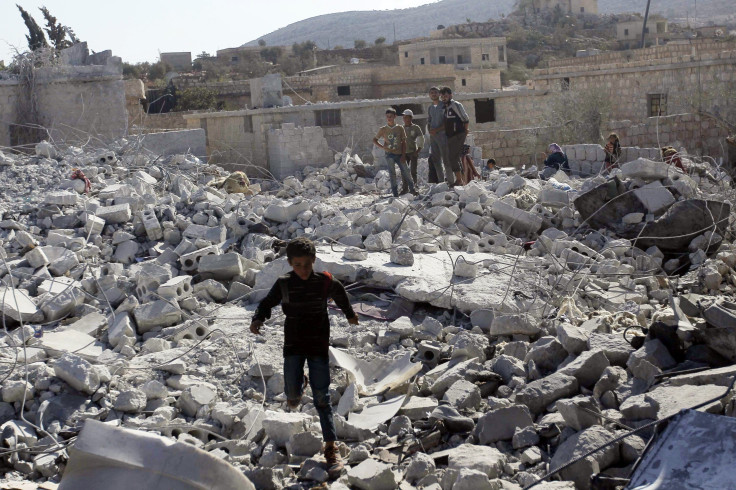Syrian Opposition Divided On UN Ceasefire Proposal, Raises Questions About Finding Assad Alternative

The United Nations made this week yet another bid to halt the civil war in Syria, but opposition groups are divided on whether to accept the proposal to freeze fighting on the front lines of major battlegrounds. After three and a half years and more than 200,000 dead, it is still not clear if the Syrian opposition can field a clear political leader, raising questions about its ability to lead, and to rule, even if President Bashar Assad were to fall.
The proposal, introduced by U.N. envoy to Syria Staffan de Mistura, would introduce “freeze zones” on the front lines and expand local ceasefires. De Mistura told the Guardian on Monday the proposal calls for incremental freeze zones, halting fighting in new battlegrounds only after previous ceasefire deals were upheld.
#Syria opposition rejects @UN proposal to "freeze" fighting, @AlArabiya reporting pic.twitter.com/TbxDCZbX2A
- Borzou Daragahi (@borzou) November 13, 2014On Thursday, leaders of the Free Syrian Army said they rejected the new U.N. proposal, believing the deal would only benefit Assad.
Recently elected Syrian National Coalition President Hadi Al Bahra said his group was considering signing on to the U.N. plan, but only if it were part of a comprehensive, political solution to end the conflict.
"The lives of Syrians are our top priority, but we need to look at this from a strategic point of view,” Al Bahra told The Guardian. “Ceasefires and limiting existing violence provide a temporary solution but not a permanent resolution of the crisis. Ceasefires without a clear vision for a full and comprehensive political solution will give the regime time to regroup and reorganize itself to continue its crimes against the Syrian people at a later stage.”
The Syrian National Coalition is the main political opposition in Syria and is recognized by seven U.N. member nations as the legitimate representative of the Syrian people. However, the group has in the past been embroiled in infighting and power struggles. Although it acts as a political representative of the opposition in Syria, it does not have the full support of the Free Syrian Army, the armed opposition group supported by the U.S.
Without the combination of an armed opposition and a political leadership, Syria is left without any real alternative to Assad. The U.S. strategy to prop up the moderate opposition with weapons has by and large not worked so far; in many areas, like Aleppo and Homs, Assad is winning on the ground, and the emergence of the Islamic State has challenged the moderates even more. The U.S. as well as other Western leaders still claim that Syria has no future with Assad still in power, but in recent weeks senior U.S. officials have voiced skepticism about the chance of finding peace in the near future.
“We certainly support ceasefires that would provide genuine relief to Syrian civilians and are consistent with humanitarian principles,” State Department spokeswoman Jen Psaki said. “Unfortunately many local truces achieved thus far have more closely resembled surrender arrangements, as opposed to genuine, sustainable ceasefire arrangements.”
This scenario played out in Homs, an opposition hotbed, in May when the Free Syrian Army surrendered to the regime and fled the city. Rebel forces pulled out of Homs after an almost two-year siege in a deal that gave control of the city to the government and allowed for the rebels’ safe passge out.
© Copyright IBTimes 2024. All rights reserved.





















